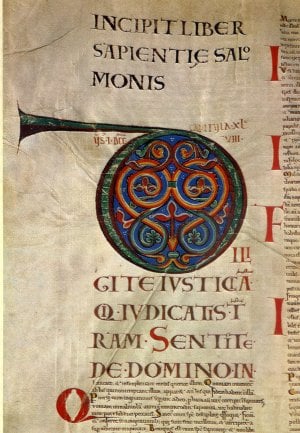Bishop Thomas J. Paprocki, Bishop of Springfield in Illinois, issued a pastoral letter on June 22 on liturgy and adoration.
Titled “Ars celebrandi et adorandi“, the letter addresses the art of celebrating the liturgy properly and adoring the Lord in the Eucharist devoutly.
In the letter, Bishop Paprocki cites Fr. Robert Barron, who often speaks about the role of beauty in attracting people to the Church. He uses Father Barron’s analogy from baseball to make his point. He notes that you will not get people interested in baseball by explaining the “infield fly rule” to them before doing anything else. What attracts people to baseball initially is the beauty of the game, the skill of pitching, hitting and catching the baseball and running the bases. The infield fly rule and all the other intricate and sometimes arcane rules of any sport only have interest and relevance for people who already know and love the game.
“The same is true,” Bishop Paprocki, explains, “with attracting people to the Church. We do not start by listing rules. The beauty of our church edifices, magnificent works of religious art and the graceful celebration of the liturgy, accompanied by harmonious music, inspiring homilies and the active participation of the faithful, are the foundational elements that attract people to the liturgy. Attention to the liturgical norms only comes after one has an appreciation for the art of the celebration.”
He references a number of sources to explain the Church’s instruction to celebrate the Mass with reverence: Pope Benedict XVI’s 2007 Post-Synodal Apostolic Exhortation on the Eucharist, Sacramentum Caritatis; Pope John Paul II’s encyclical Ecclesia de Eucharistia (on the Eucharist in its Relationship to the Church), 1986 Holy Thursday Letter to Priests; the apostolic constitution Lumen Gentium.
But the part that’s likely to get the most attention in the days and weeks to come is the bishop’s call for tabernacles to be centered in the sanctuary or at least, if on the side, to be in a prominent and noble place. He precedes this instruction with a careful explanation.
The Reservation and Adoration of the Holy Eucharist
18. While the Holy Eucharist is reserved in the tabernacle of every parish church in our diocese, the faithful in some places do not frequently come to pray before the tabernacle to be in the presence of the Lord. Several reasons for this certainly exist, but one among them is the reality that the tabernacle is not always easily found in many of our churches today. Over the past few decades, tabernacles all too often were moved from prominent places in the sanctuary to obscure and remote rooms that in some cases were previously supply closets.
19. The present legislation of the Church concerning the placement of the tabernacle states, “In accordance with the structure of each church and legitimate local customs, the Most Blessed Sacrament should be reserved in a tabernacle in a part of the church that is truly noble, prominent, conspicuous, worthily decorated, and suitable for prayer.”13 Regrettably, this is not always followed.
20. In some churches and chapels, the tabernacle is set on a “side” altar in such a way that the tabernacle, though noble, is neither prominent nor readily visible. The same is often the case with the location of some Eucharistic chapels, whether they be in the nave itself, behind the sanctuary, or in another room. They are not always prominent or readily visible.
21. The great majority of our parish churches and chapels were designed to house the tabernacle in the center of the sanctuary; removing the tabernacle from these sanctuaries has left a visible emptiness within the sacred space, almost as though the building itself longed for the return of the tabernacle. With the removal of the tabernacle from the center of the sanctuary, the architectural integrity of many churches and chapels has been severely compromised.14
22. Pope Benedict XVI wrote in his Post-Synodal Exhortation on the Eucharist in 2007, “The correct positioning of the tabernacle contributes to the recognition of Christ’s real presence in the Blessed Sacrament. Therefore, the place where the Eucharistic species are reserved, marked by a sanctuary lamp, should be readily visible to everyone entering the church. … In any event, final judgment on these matters belongs to the Diocesan Bishop.”15
23. With this in mind, in order that more of the faithful will be able to spend time in adoration and prayer in the presence of the Eucharistic Lord, I direct that in the churches and chapels of our diocese, tabernacles that were formerly in the center of the sanctuary, but have been moved, are to be returned as soon as possible to the center of the sanctuary in accord with the original architectural design. Tabernacles that are not in the center of the sanctuary or are otherwise not in a visible, prominent and noble space are to be moved to the center of the sanctuary; tabernacles that are not in the center of the sanctuary but are in a visible, prominent and noble space may remain.
The letter continues with instructions regarding genuflecting before the Blessed Sacrament, and processions with the Blessed Sacrament.
Read the letter in its entirety here.












